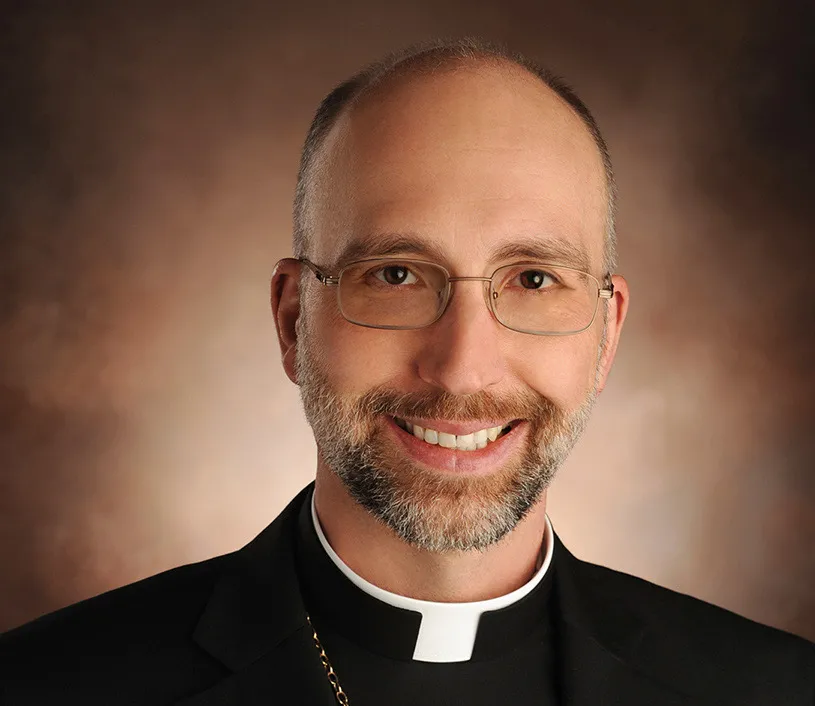Marquette Bishop: Document on Same-Sex Attraction, Gender Dysmorphia About Accompaniment, Not Exclusion
Bishop Doerfler said the document is not intended to serve as a complete treatment of the issue, but rather to provide basic considerations for pastoral care in these cases.

A document addressing the pastoral care of persons experiencing same-sex attraction and gender dysmorphia is about accompaniment and not exclusion, Bishop John Doerfler of Marquette has said.
“The whole document is not in any way meant to exclude people, but to help facilitate [a] journey to Jesus Christ in faith, a part of which does mean taking a look at our life, and if we're living contrary to the Gospel message to address that,” Bishop Doerfler said in a Dec. 15 interview with CNA.
“Somewhere along that path of conversion and that journey of faith, each and every one of us needs to take a look at our own lives … and say there are things in our life we need to change.”
The Michigan bishop said that the 15-page document “should be really seen in that context.”
The pastoral instruction “Created in the Image and Likeness of God” was originally released July 29, but media outlets picked it up in early December. Much media coverage has painted the document as excluding people experiencing same-sex attraction or gender dysmorphia from the life of the Church.
One section of the document raises concerns that self-identified transgender people not be baptized without repentance. Bishop Doerfler said that section of the document needs to be read in the context of the rest of the document.
“The document contains several sections: the art of pastoral accompaniment; the meaning and purpose of human sexuality; general approaches to the accompaniment of persons with same-sex attraction and persons with gender dysphoria, then some guidance for some select pastoral circumstances,” he said.
“You can't really understand the guidance for the select circumstances at the end apart from this whole art of pastoral accompaniment,” he said. “Taking it out of that context makes it appear very harsh.”
The Diocese of Marquette released the document in July to clergy and others involved in pastoral ministry and on the bishop’s webpage. Bishop Doerfler said the document was met with praise at the time.
“In general, I received gratitude from priests and others in the field for having some pastoral guidance in this area,” he said.
Bishop Doerfler said the document is not intended to serve as a complete treatment of the issue, but rather to provide basic considerations for pastoral care in these cases.
“It can‘t nor does it solve every little question or every circumstance that might come up,” he said. “That’s impossible to put in a document. But it gives us a general orientation and a general approach to matters where we need to be guided by the Holy Spirit and pastoral prudence, in fidelity to what our Lord Jesus has revealed to us and [what] is taught by our beloved Church.”
In the document, the bishop describes pastoral accompaniment as “the approach and subsequent establishment of an ongoing relationship of trust with another person to walk together on the path of conversion to follow Jesus Christ in faith.”
Bishop Doerfler gave the example of Jesus’ encounter with the Samaritan woman, from the Gospel of John. Jesus engages the woman in conversation and treats her with love, respect, and dignity.
“He offers her this life-giving water, and it's only when the woman finds this message that Jesus is giving attractive — when she encounters Him — that then the Lord begins to look at her life and some things that need some changing,” Doerfler said.
“He only gets to that point after there‘s been this relationship of trust, where the woman begins to encounter the Lord Jesus and His love for her. It’s in that context that she grows into deeper faith and is able to take a look at her life.”
The bishop said there is a clear distinction between experiencing same-sex attraction or gender dysmorphia and deliberately acting on those feelings.
“It‘s not a sin to experience same-sex attraction, and it’s not a sin to experience gender dysphoria,” Bishop Doerfler said. “It‘s how we act on those experiences freely and deliberately that we need to take a look at. If we’re acting on those experiences in a way that‘s contrary to the truth that Jesus reveals to us, that’s where we need to look at changing our behavior. But just those experiences themselves are not sinful.”
The bishop added: “That‘s a very important distinction we have to keep in mind and it’s something that is, I think, often glossed over.”
In a recent interview with a Michigan news outlet, Bishop Doerfler said everyone is welcome in the Church.
“You’re most welcome. You’re most welcome,” he said. “I’ve had the privilege of counting among my friends persons with same-sex attraction, and you are most welcome. Jesus loves you with the depths of his heart and wants to come more deeply into your life.”
- Keywords:
- marquette
- same-sex attraction
- gender dysphoria













